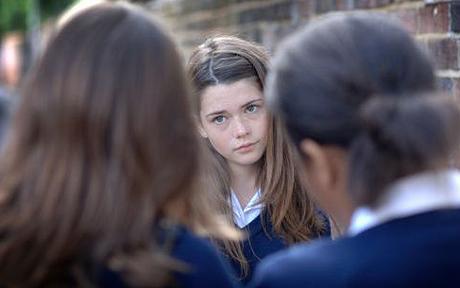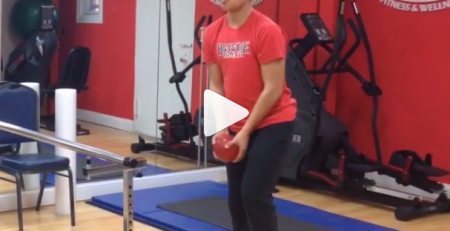Social Sensing Game Detects Classroom Bullies
A social computer game designed by researchers in computer science and educational psychology at the University of Illinois can identify bullies in elementary school classrooms and help scholars better understand peer aggression, whether it occurs face to face or online.
A social sensing game created at Illinois allows researchers to study natural interactions between children, collect large amounts of data about those interactions and test theories about youth aggression and victimization.
The game’s behavior analyses effectively identify classroom bullies, even revealing peer aggression that goes undetected by traditional research methods, the researchers say.
The game’s developers say it is an improvement over traditional research methods, such as questionnaires, which do not assess interactions between youth in real time.
“What we wanted was to have more real-time information and to include advancements in computer science to process the data and get more insights into it so we could understand the problem of bullying better and create interventions,” said Juan F. Mancilla-Caceres, who developed the algorithms for the game while earning a doctorate in computer science at the university.
Mancilla-Caceres is the lead author on several papers about the game, one of which was published online recently by the Journal of School Violence.
Co-authors Eyal Amir and Dorothy Espelage, both faculty members at Illinois, led research groups that collaborated on the project. Amir is an adjunct professor of computer science. Espelage is the Gutgsell Endowed Professor of child development in the College of Education and an expert on youth violence.
The research was conducted as part of a larger, longitudinal study on bullying led by Espelage and funded by the National Science Foundation.
Working in teams and communicating with each other over their classrooms’ computer networks, the students playing the game must answer two sets of five trivia questions. During the collaborative phase of the game, team members discuss the questions and agree on the correct answers, which each member then submits electronically.
If team members are unable or unwilling to agree on an answer, they have the opportunity to peek at the correct answer – but one or more team members are penalized some of the digital coins or points they accrue for correct answers.
During the competitive phase of the game, each of the team members must select a different answer for every question, including one response that is explicitly marked as incorrect. The team member who submits the incorrect answer receives no points, but if nobody on the team submits that answer, every member is penalized.
The researchers tested the game with 97 students in six classrooms who were participating in Espelage’s bullying research. The students, all fifth-graders, had been surveyed about various types of bullying, fighting, leadership and domineering behavior, as well as their attitudes and friends’ perceived attitudes toward victimizing and defending peers.
Based on students’ self-reports, each student was labeled a “bully,” “non-bully” or “victim” prior to playing the game.
Analyses of the 7,800 messages that the participants exchanged over the chat interface were compared to the survey data, and the researchers found that the game was effective at evaluating player interactions and detecting bullying.
“Bullies played the game very differently than their classmates who were non-bullies or victims,” Espelage said. “Bullies sent more private messages, peeked at the correct answer more often and sent more negative nominations.”
The game also revealed bullying behavior that had eluded detection by traditional research methods, said Mancilla-Caceres, currently an applied researcher with Microsoft Corp.
Participants were asked to nominate classmates that they wanted or did not want as teammates for the game; however, the researchers actually formed the teams and used the nominations to gain insight into each classroom’s social networks.
One player nominated three individuals to be his/her teammates, while each of these individuals negatively nominated the first child. Analyses of the participants’ chat messages indicated that the three classmates had formed a clique and were bullying the first child, although the self-reports had not captured that.
The researchers plan to refine the game, adding new tasks to increase player engagement and improve the efficiency of the behavior analyses. The game may become available to other scientists and educators in the near future.










